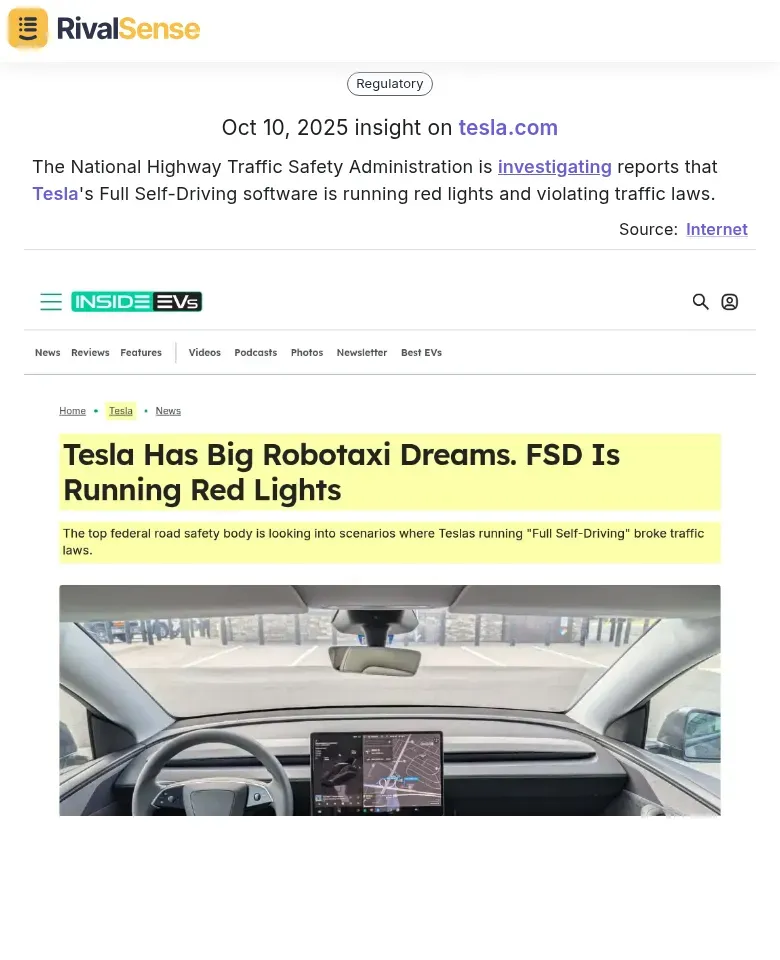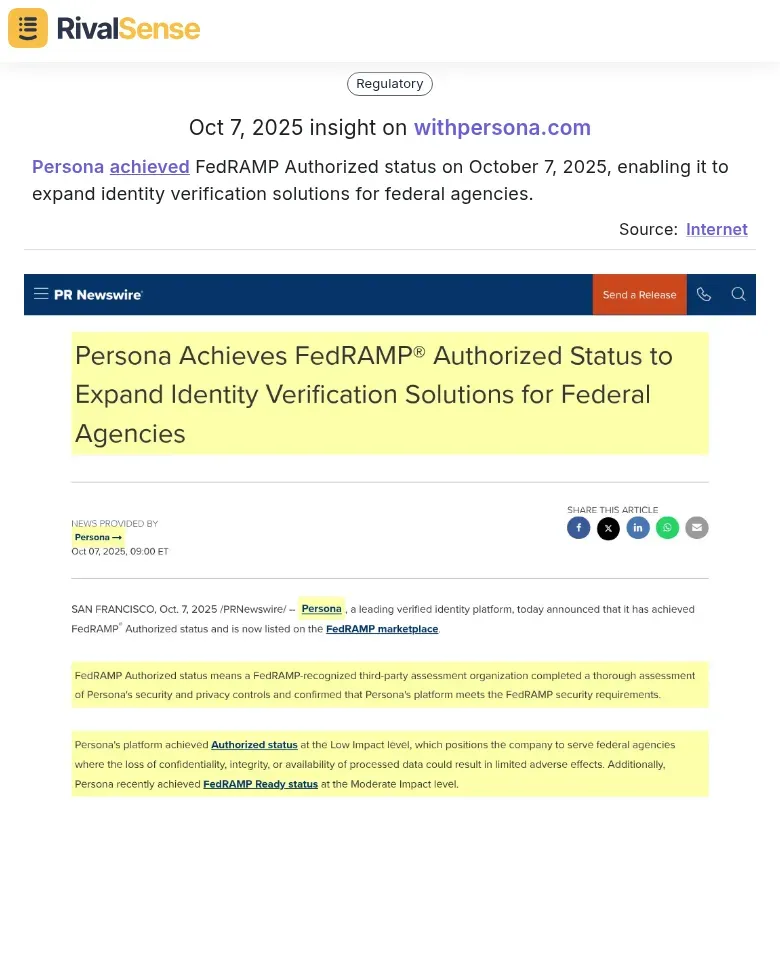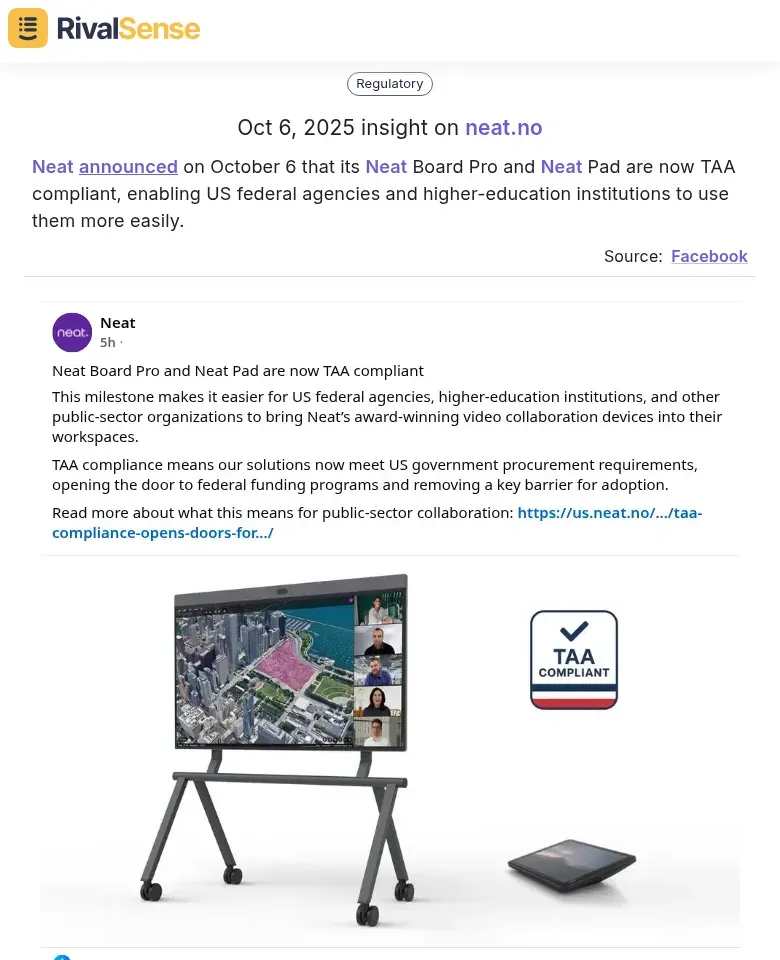Advanced Regulatory Competitor Insights for Market Share Analysis
In today's tightly regulated markets, your competitors' compliance status isn't just about legal adherence—it's a direct indicator of their market positioning and competitive advantage. Companies with clean regulatory records and timely approvals can launch products faster, secure premium pricing, and build stronger customer trust, while those facing compliance issues often lose market share and face operational constraints. Regulatory intelligence serves as your crystal ball for predicting market share shifts. By monitoring competitors' FDA approvals, environmental permits, or financial compliance milestones, you can anticipate which players are poised for expansion and which face potential setbacks.
This intelligence reveals underserved market segments and emerging opportunities before they become obvious to everyone else. Tracking competitors' regulatory milestones provides crucial early warning signals for market disruption. A competitor's new product approval or compliance violation can reshape the competitive landscape overnight. By staying ahead of these regulatory developments, you position your organization to respond proactively rather than reactively to market changes.
🛠️ Practical Steps to Leverage Regulatory Insights:
- Create a competitor regulatory dashboard tracking key approval timelines.
- Set alerts for competitors' regulatory filings and public hearings.
- Analyze regulatory patterns to identify market entry windows.
- Monitor enforcement actions as early warning signals.
Learning from Regulatory Investigations: The Tesla FSD Case Study
Regulatory investigations can expose critical vulnerabilities in competitors' products and create openings for market entry. For example, Tesla's Full Self-Driving (FSD) regulatory investigations reveal how regulatory scrutiny highlights product flaws and erodes consumer trust. When regulators questioned FSD's safety claims, it underscored gaps in Tesla's autonomous technology—opening doors for competitors like Waymo and Cruise to emphasize their more cautious, compliance-focused approaches.
Monitoring such investigations is essential for competitive intelligence, as they signal deeper issues that can lead to market share loss. Insights from tools like RivalSense can provide real-time alerts on regulatory probes, such as the National Highway Traffic Safety Administration investigating reports that Tesla's FSD software is running red lights and violating traffic laws.  This type of insight is valuable because it offers early warnings of compliance failures, allowing you to position your product as a safer alternative and capitalize on competitors' missteps.
This type of insight is valuable because it offers early warnings of compliance failures, allowing you to position your product as a safer alternative and capitalize on competitors' missteps.
✅ Checklist for Action:
- Subscribe to regulatory alerts for key competitors.
- Conduct gap analyses: Compare your compliance measures against exposed weaknesses in competitors' products.
- Enhance transparency: Proactively share safety data and certifications to build trust.
- Update marketing: Highlight your adherence to stringent standards, contrasting with competitors under scrutiny.
- Engage regulators: Participate in consultations to shape favorable regulations.
Capitalizing on Compliance Achievements: The Persona FedRAMP Example
When competitors achieve major compliance certifications, they often unlock access to lucrative, regulated markets that were previously inaccessible. Persona's FedRAMP authorization, for instance, immediately opened doors to federal agencies and contractors requiring stringent security standards. This creates a competitive moat that reshapes market dynamics and can signal new growth opportunities for your business.
Tracking these milestones through tools like RivalSense provides actionable intelligence on market expansion. For example, RivalSense reported that Persona achieved FedRAMP Authorized status on October 7, 2025, enabling it to expand identity verification solutions for federal agencies.  This insight is valuable because it highlights how compliance achievements can serve as market validation, helping you time your own strategic moves and identify untapped segments.
This insight is valuable because it highlights how compliance achievements can serve as market validation, helping you time your own strategic moves and identify untapped segments.
🛠️ Practical Steps to Capitalize:
- Monitor compliance announcements through regulatory databases and competitor press releases.
- Analyze the specific market segments newly accessible to your competitor.
- Assess your own compliance roadmap—can you accelerate similar certifications?
- Time your market entry: launch complementary offerings or target adjacent segments where compliance isn't a barrier.
- Use their achievement as validation to educate your market about the importance of such certifications.
Understanding Market Access Expansion: The Neat TAA Compliance Case
Compliance with specific regulations like the Trade Agreements Act (TAA) can grant exclusive market access, particularly in government and education sectors where procurement mandates require compliant products. Neat, a video conferencing hardware provider, leveraged TAA compliance to secure preferential access to federal and state contracts, effectively creating barriers for non-compliant competitors. This strategic move not only expanded their market share but also positioned them as trusted vendors in highly regulated environments.
The impact on competitive positioning is profound, as competitors with such access capture lucrative segments with reduced competition. Insights from RivalSense can alert you to these developments, such as Neat announcing on October 6 that its Neat Board Pro and Neat Pad are now TAA compliant, enabling US federal agencies and higher-education institutions to use them more easily.  This type of insight is valuable because it helps you anticipate market shifts, identify compliance gaps, and adapt your strategy to avoid being locked out of opportunities.
This type of insight is valuable because it helps you anticipate market shifts, identify compliance gaps, and adapt your strategy to avoid being locked out of opportunities.
✅ Checklist for Response:
- Conduct a regulatory gap analysis to identify compliance requirements in your target markets.
- Invest in certification processes early to avoid missing opportunities.
- Monitor competitors' compliance status using automated tools.
- Develop alternative value propositions, such as superior service or innovation, to compete in non-regulated segments.
- Engage with procurement officials to understand evolving regulatory landscapes.
Integrating Regulatory Insights into Market Share Analysis
Integrating regulatory insights into market share analysis transforms compliance data into a strategic asset that drives decision-making. By quantifying the impact of competitors' regulatory achievements or failures, you can correlate approval timelines with sales data—for instance, a delayed FDA approval might lead to a 15–20% market share loss within six months. This approach allows you to model share shifts and identify emerging trends before they impact your business.
Building regulatory intelligence dashboards by aggregating data from sources like FDA databases, SEC filings, and news alerts enhances visibility into competitor movements. Include widgets for compliance status (e.g., green/yellow/red indicators), milestone timelines, and penalty histories to spot anomalies. Tools like RivalSense automate this process, flagging events such as product recalls that signal vulnerability and opportunity.
🛠️ Steps to Forecast Market Share Redistribution:
- Map regulatory events to sales data to identify correlations.
- Set up real-time alerts for competitor filings and compliance changes.
- Prioritize acquisition targets based on compliance scores and market overlap.
Actionable Strategies for Leveraging Regulatory Competitor Intelligence
Transforming regulatory competitor intelligence into actionable strategies requires a proactive and systematic approach. First, develop proactive compliance by analyzing competitors' regulatory filings and certifications—track their approval timelines and compliance gaps to anticipate market shifts. For example, if a rival secures a new certification, accelerate your own process to maintain competitive parity and avoid losing ground.
Second, create scenario-based response plans to handle regulatory events effectively. For investigations, prepare transparent communication strategies to build trust; for compliance failures, have contingency plans to capitalize on competitors' missteps. Third, build sustainable advantage by integrating regulatory intelligence into your market analysis, using tools like RivalSense to monitor changes in real-time and identify where compliance can become a differentiator.
✅ Practical Steps for Implementation:
- Conduct quarterly audits of competitors' regulatory statuses.
- Map their compliance history to predict future actions and market movements.
- Train teams on regulatory scenario planning to enhance responsiveness.
Try RivalSense for Free
Leveraging regulatory insights doesn't have to be complex. With RivalSense, you can track competitor product launches, pricing updates, event participations, partnerships, regulatory aspects, management changes, and media mentions—all delivered in a weekly email report. Get your first competitor report today and start turning compliance data into competitive advantages. Try RivalSense for free here!
📚 Read more
👉 How PayPal's PYUSD Expansion on Stellar Reveals Key Competitor Moves
👉 How to Analyze Your Competitors' Ads on Google, Facebook & Instagram
👉 Build Key Account Performance Dashboards for Fintech B2B
👉 How Xometry's Mobile App Launch Prompted Competitor Innovation
👉 Data-Driven Website Insights: Boost Key Account Performance
